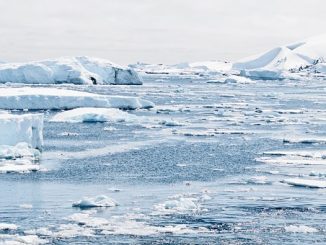
According to new research recently published in the journal Geophysical Research Letters, the conditions set forth by the 2015 Paris Climate Treaty might not be enough to stave off the catastrophic results of global warming. Under this initiative, different governments committed to take actions that would keep global warming to ‘well below 2°C above pre-industrial levels’, and ‘aim to limit the increase to 1.5°C’ to reduce the risks and impacts of climate change. Unfortunately, all that noble effort might be far from sufficient.
Based on the analysis done by Ben Henley and Andrew King of the University of Melbourne, the 1.5°C may be reached or surpassed if the Interdecadal Pacific Oscillation (IPO) — an alternating pattern of ocean-atmosphere temperatures that affects weather and global temperature around the world — shifts the Pacific sea surface temperatures from a cool to a warm phase. Once this happens, global temperatures are expected to go well above the 1.5°C target within a decade (most likely around 2026).
Similar with the El Niño (warm phase) and La Niña (cold phase), the IPO fluctuates cyclically too. But while the shift from El Niño to La Niña and vice versa occurs every 2 – 7 years, the IPO’s shift from El Tio (warm phase) to La Tia (cool phase) and vice versa occurs every 10 – 30 years.
The last two times our planet experienced El Tio (also referred to as a positive IPO) was during 1925 – 1946, then 1977 – 1998. During both periods, rapid increase in global temperature was observed.
In between, from 1947 – 1976, the planet experienced La Tia (also referred to as a negative IPO), during which the rise in global temperature slowed down. Since 1999, we have been in another La Tia phase, which is likely why the temperatures have not been rising as fast as some scientists have been expecting.
A prolonged La Tia will be good for our planet and will give us time to do something about our carbon footprint. However, based on a study published in the journal Nature, plus the fact that we’ve seen record-breaking warm years for the last 3 years, it seems El Tio is already returning. Which means we’ll be in deeper trouble as this will most likely accelerate global warming.
Henley and King say they’ve used computer models to simulate different scenarios involving the IPO. And none of their simulations resulted in an encouraging outlook.
As Henley said in a statement they issued: “Even if the IPO remains in a negative phase, our research shows we will still likely see global temperatures break through the 1.5°C guardrail by 2031. If the world is to have any hope of meeting the Paris target, governments will need to pursue policies that not only reduce emissions but remove carbon from the atmosphere.”
The world has the technology and enough brilliant minds to save itself from destruction. But a few nations working together just won’t cut it. We may have fought against each other before. And on some fronts, we’re still doing it thanks to our political incompetence. But the fight against global warming is something we have no choice but to unite. Our existence depends on it.
As Henley warns: “Policy makers should be aware of just how quickly we are approaching 1.5°C. The task of reducing emissions is very urgent indeed.”
Disclaimer: This page contains affiliate links. If you choose to make a purchase after clicking a link, we may receive a commission at no additional cost to you. Thank you for your support!




the Planet Earth has been doing this ‘climate change’ over and over for millions of years, [man-humans] can’t change a thing, get over it. live and let live is a much better thing to waste your time thinking to change and ending mental illness would be Great, try that OK.
The fact that you don’t know the difference between the natural climate change cycles and the clearly measured and documented effect that human industrial action has had recently on the climate shows that you are way out of your depth here. Just stop – you’re making a fool of yourself
So what, exactly, makes this 1.5C threshold “disastrous”? That it was set as a target in an international agreement?
It’s easy to find the answer to that if you do a quick google search.
https://e360.yale.edu/features/what_would_a_global_warming_increase_15_degree_be_like
https://www.scientificamerican.com/article/earth-flirts-with-a-1-5-degree-celsius-global-warming-threshold1/
Your conclusions are wrong. We can get over the problem without uniting, and it is arguably cheaper: set warring factions against each other, for example. If you can do it away from your home country and keep it contained while making sure that a lot of people die in the ensuing battles then you don’t have to spend all that money on R&D, and you can (subsequently) boost the standard of living in your home country because you have fewer mouths to feed.
Another Al Gore type prediction. Which will be proven wrong.